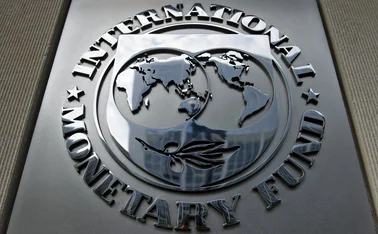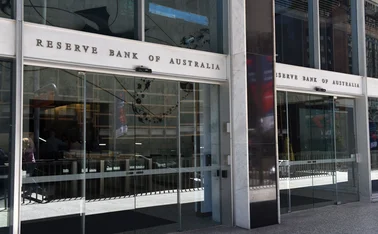
CoCos offer banks more hope than bail-in: CentralBanking.com panel

Panellists at a Central Banking On Air web seminar on Tuesday said contingent capital bonds' conversion to equity would be triggered before bail-in capital, giving banks a shot at recovery, rather than aiding their resolution.
Contingent capital bonds, referred to as CoCos, are debt instruments that convert to equity when a pre-determined floor of individual or industry-wide losses is breached. They differ from bail-in capital instruments, which are bonds that convert to equity when regulators think a firm is in trouble.
Both have won the support of central bankers: Mark Carney, the governor of the Bank of Canada, has thrown his weight behind contingent capital while Paul Tucker, a deputy governor of the Bank of England, has said there is no alternative to bail-in capital.
Gilbey Strub, a managing director at the Association for Financial Markets in Europe, a trade body, said CoCos applied to going concerns, while bail-in was directed at gone concerns. Strub's organisation was an early proponent of the argument for bail-in capital, in an August paper. "Contingent capital is a recovery tool with a high trigger and comes into play before bail-in capital, which is a resolution tool with a low trigger," Strub said. With the latter, "power is vested in the authorities to step in over a weekend and carry out a fast-tracked recapitalisation," overwriting the bank's investors, whereas the former would trigger much earlier, she said. Simon Gleeson, a partner at Clifford Chance, a UK-based law firm, added that contingent capital could be viewed as a "pre-insolvency mechanism," compared to bail-in capital.
Selling CoCos
Given this definition, contingent capital offers a greater amount of intuitive appeal, particularly to investors. "The contract is upfront, [the investor] know what they've signed up to when they bought the bond and that is priced into the transaction," Brandon Davies, a member of the financial markets group at the London School of Economics, said. "The more we can do under contingent capital and the less under bail-in the better - it's always better to sign up to it voluntarily."
However, getting investors to "sign up" to this would be another thing. "Investors will buy anything if the yield is right," Gleeson said. "The real question is whether the yield on [contingent capital bonds] will be so high as to make it economically prohibitive to issue them - and we'll only know that when we issue them."
Why breaking up the banks won't help
The panellists also analysed the idea of splitting banks into their investment and retail operations, an approach favoured by Mervyn King, the governor of the Bank of England, from the perspective of the risks posed by each side. "Retail banks are up to their eyes writing derivatives, trying to manage the risk that you think isn't there," Davies said.
Davies, who headed the retail risk division of Barclays, a British bank, prior to his current role, stressed that the options written by retail banks are "often far more complicated" than those issued by investment banks. "If wholesale banks get into trouble, retail banks will get into trouble. There is a real danger in thinking that we can split these off so that one is risky and the other isn't." This was an issue arising from the "complexity built into the term ‘retail bank'," Gleeson said, arguing that the "textbook retail bank" is one that is funded through retail deposits, which is not necessarily the case anymore for lenders who serve retail customers.
Strub pointed out that the recent crisis was not specific to one or the other type of bank. "We had too many failures of deposit-takers [such as Northern Rock, a failed UK lender] on the one hand and failures of investment banks [such as Lehman Brothers, a collapsed US bank] on the other, to draw any conclusions as to whether splitting up the banks would be a solution," she said.
Only users who have a paid subscription or are part of a corporate subscription are able to print or copy content.
To access these options, along with all other subscription benefits, please contact info@centralbanking.com or view our subscription options here: http://subscriptions.centralbanking.com/subscribe
You are currently unable to print this content. Please contact info@centralbanking.com to find out more.
You are currently unable to copy this content. Please contact info@centralbanking.com to find out more.
Copyright Infopro Digital Limited. All rights reserved.
You may share this content using our article tools. Printing this content is for the sole use of the Authorised User (named subscriber), as outlined in our terms and conditions - https://www.infopro-insight.com/terms-conditions/insight-subscriptions/
If you would like to purchase additional rights please email info@centralbanking.com
Copyright Infopro Digital Limited. All rights reserved.
You may share this content using our article tools. Copying this content is for the sole use of the Authorised User (named subscriber), as outlined in our terms and conditions - https://www.infopro-insight.com/terms-conditions/insight-subscriptions/
If you would like to purchase additional rights please email info@centralbanking.com







